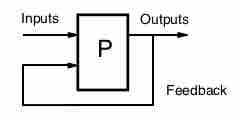Management is more complex than a simple top-down mentality. Management is a functional discipline in many ways, where the ability for an individual to successfully manage is the professional skill being assessed. Just as an accountant is measured by their performance producing accurate and timely financial submissions, so too is a manager measured by the satisfaction and productivity of their employees.
Why Manage Up
As an employee, it is important to organizational success to manage one's manager to some degree. This is because managers are working towards becoming better managers, and the people in the best position to help them accomplish this objective are the employees themselves. Good managers will value employees willing to provide feedback, make objective observations, and help managers grow.
Through encouraging employees across the organization to manage up, organizations capture the benefit of having an open feedback loop between work groups and their managers, where both parties can potentially improve their performance. Managing down improves employees' ability to accomplish their tasks, while managing up improves management's ability to enable employees.
Effective Evaluation in the Workplace
A proper evaluation will have different requirements based upon the function being evaluated. However, most effective evaluation approaches will include the following:
- Assessment – For both managers managing down and employees managing up, some form of formal assessment is useful in enabling effective evaluations. This assessment should focus on strengths and weaknesses, usually utilizing some sort of sliding scale. An effective assessment should be as objective as possible, focusing on actionable areas of improvement.
- Objectives – Evaluation requires an understanding of what that individual should be trying to accomplish, and some form of benchmark to measure if these objectives are being met. It can also be useful to provide feedback which can actively be applied to achieving these objectives.
- Sharing Feedback – Aside from assessment metrics and objectives, good feedback also tends to include qualitative thinking. It's not always as simple as rating an individual's performance on a scale of 1-10. More often comments and discussions are necessary for feedback to be useful. Any evaluation in the workplace should have some outlet for this, be it 1-to-1 discussions or more formal quarterly feedback sessions.
- Rewards and Consequences – Finally, feedback and evaluations must be tied to some sort of motivating outcome for the individual receiving it. If a manager is performing well, and the team is satisfied, it would be reasonable to provide the manager a bonus or a raise. Similarly, if employees are exceeding expectations, the same rules apply.

Feedback Loop
This image demonstrates the basic concept of iterative feedback, where suggestions lead to evolving behavior.